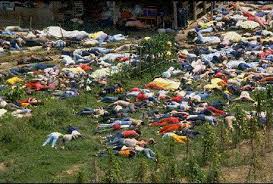Toxic leadership always ends badly but it doesn’t start that way. Toxic leadership (as is the case with any from of leadership) requires followership and to assume that at the outset the followership knew what they were in for is incorrect. Toxic leadership goes bad in stages and the followership are sucked in over time to the point that they are unable to see the toxicity emerging – or if they do, they often feel powerless to oppose it. They might feel entrapped and that they have too much to lose by speaking up and so end up by doing nothing.
Toxic behaviour cultivates dependency, promotes cronyism and corruption, misuses resources and ignores incompetence. However toxic leadership is often charismatic, has a ‘X-factor’ and stands for something – the righting of a perceived wrong, the meeting of a felt need or the safety derived from togetherness. There are plenty of examples of toxic leadership that span the religious, political and corporate worlds. Think Jim Jones, the religious leader who led his followers to  the utopia that was Jonestown in Guyana and which ended with 909 of his followers taking their own lives by drinking poison. Think the fall of Enron, the seventh largest corporation at the time. Enron was the biggest bankruptcy in USA corporate history – a company that took 16 years to build and only 24 days to collapse. 20 000 people lost their jobs (that doesn’t include those who lost their jobs through Arthur Andersen’s demise) and $2 billion of pension funds lost.
the utopia that was Jonestown in Guyana and which ended with 909 of his followers taking their own lives by drinking poison. Think the fall of Enron, the seventh largest corporation at the time. Enron was the biggest bankruptcy in USA corporate history – a company that took 16 years to build and only 24 days to collapse. 20 000 people lost their jobs (that doesn’t include those who lost their jobs through Arthur Andersen’s demise) and $2 billion of pension funds lost.
Toxic leadership always ends badly, but it doesn’t start that way.
So how do we recognise toxic leadership? What are the traits of toxic leadership that we need to be able to recognise in order to challenge it and prevent it ending as it does?
There are seven traits of toxic leadership that Jean Lipman-Blumen identifies in her book, The Allure of Toxic Leaders that help us recognise that something is not right. The early detection of these traits can make all the difference as to whether or not the full consequences of toxic leadership root and play out.
 1. Reckless regard of consequences
1. Reckless regard of consequences
2. Avarice and greed
3. Amorality
4. Arrogance and ego
5. Insatiable ambition
6. Lack of integrity
7. Intent to harm
Toxic leadership is not something we like to talk about as it sounds so extreme, so dark. Yet there are many reasons we excuse, overlook, admire and even love toxic leadership. It always seems so obvious with the perspective of hindsight or when viewed from the ‘outside’ but somehow is missed when on the inside. Therein is the danger of followers who stop thinking for themselves, followers who stop asking questions and environments where feedback is not tolerated. In the Enron case, it was a question asked by a woman at a shareholders meeting that proved to be the initial catalyst that brought the whole empire down. Toxic leadership is more common than we might acknowledge. Environments where the ability to ask questions, hold those in leadership accountable and the wrong things measured provide the breeding ground for toxic leadership.
Don’t think that you will never be caught up in the trap that is toxic leadership. Learn to recognise it before it becomes destructive and remember that all it takes for evil (toxic leadership) to triumph, is for good people to do nothing.
(Professor Nick Barker of TomorrowToday has developed a workshop on the subject of toxic leadership that is often incorporated into leadership development programmes. It uses the film documentary of the tragic Jim Jones story to help identify what is toxic leadership, how to recognise it’s development or encroachment and what to do about it. It is something ever organisation should pay attention to and never assume that it “can’t happen to us”)



We humans are normally afraid of talking about our leaders short comings. This encourages toxic leadership without us knowing. When we do realise where we have reached, it too late for the leader to make any change that would help the masses. At this point, we are all in the hole. Your article encourages us to be on the look out for possible clues of toxicity in our leaders. Thank you very much.
Mwamzali
Nairobi